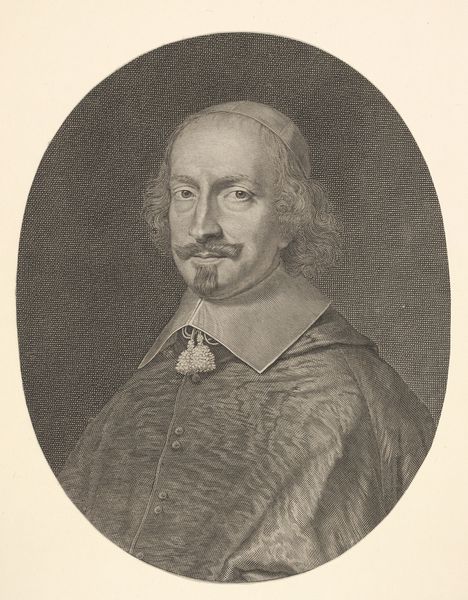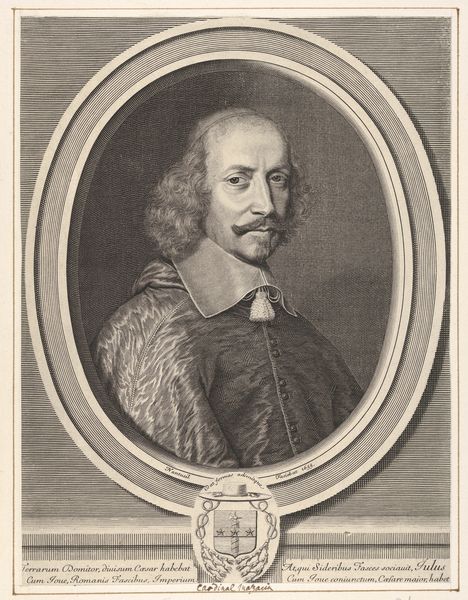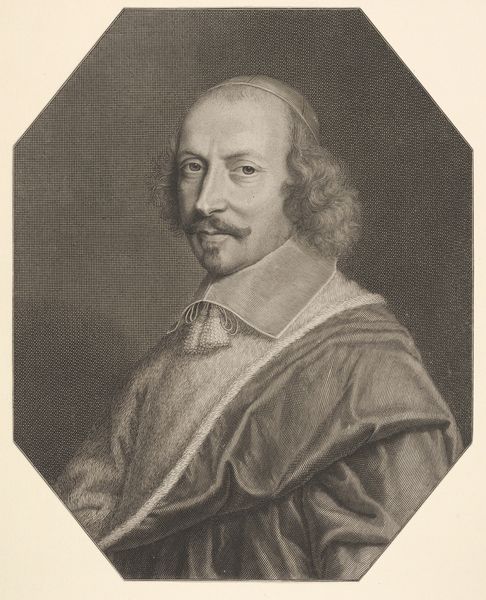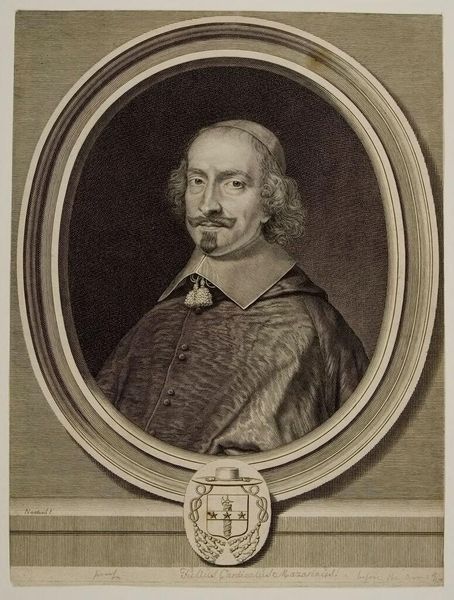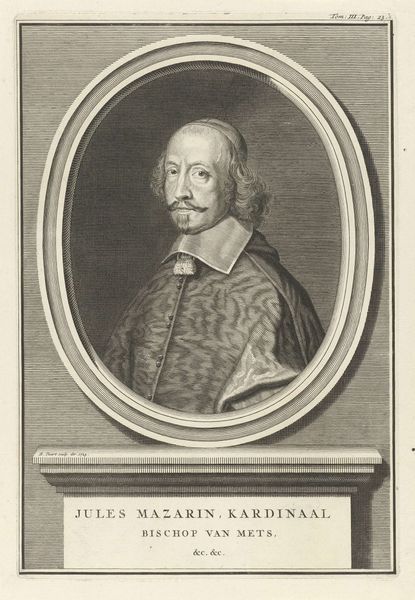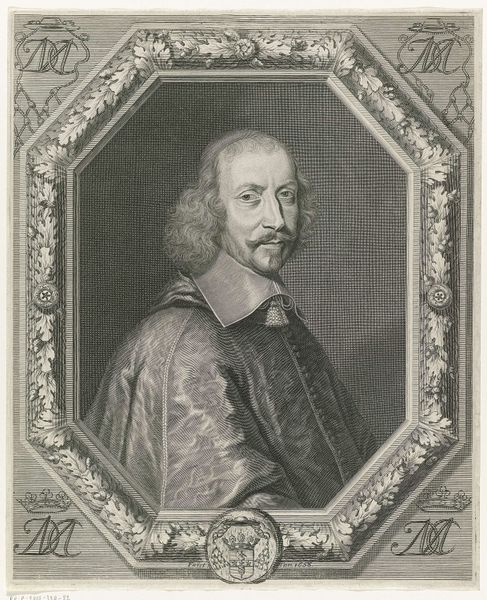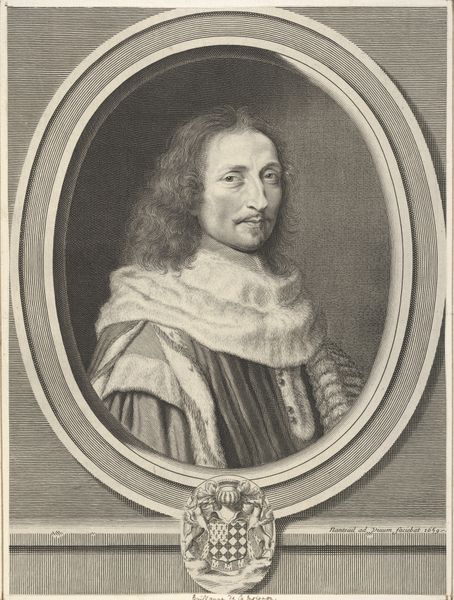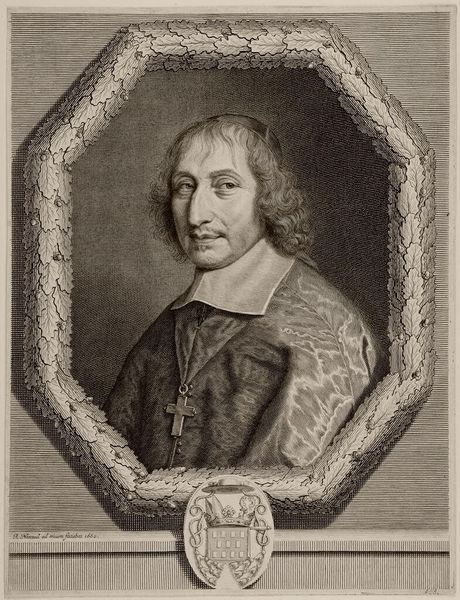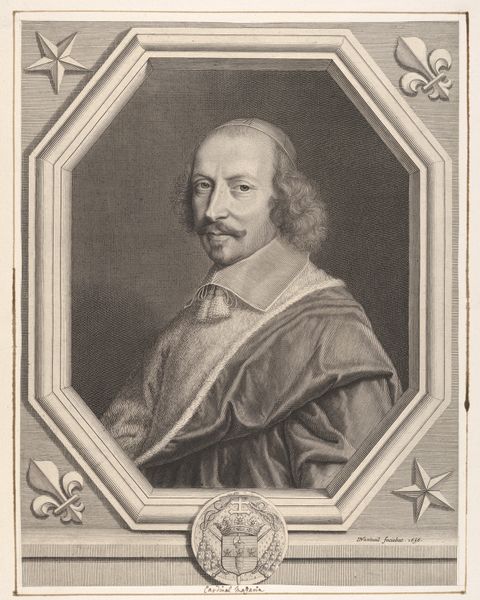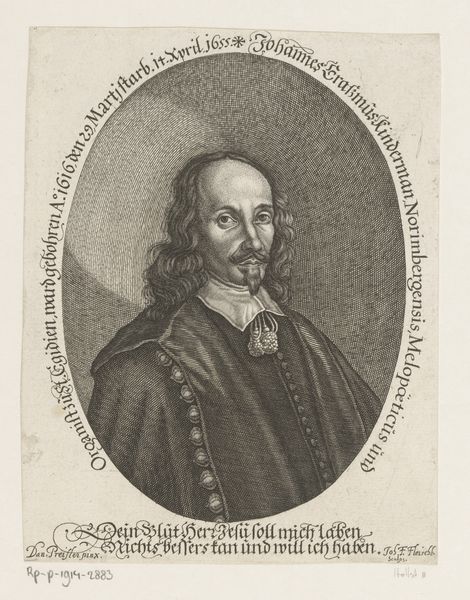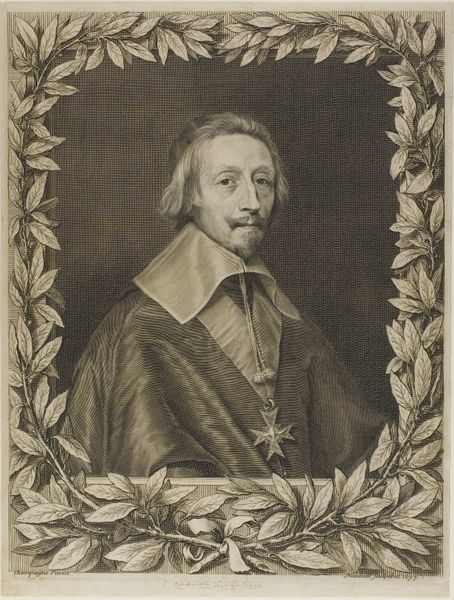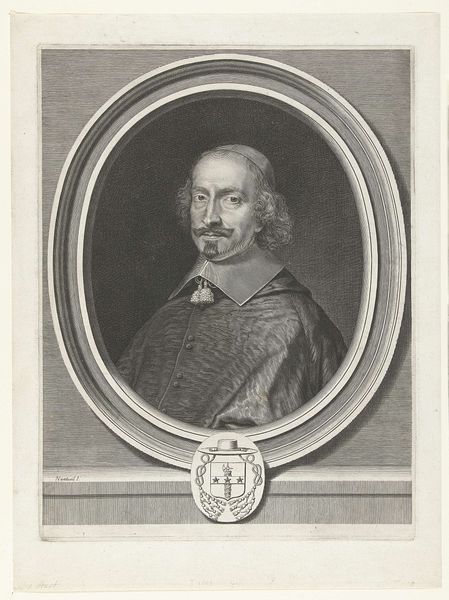
drawing, print
#
portrait
#
drawing
#
facial expression drawing
#
baroque
#
portrait image
# print
#
charcoal drawing
#
portrait reference
#
portrait head and shoulder
#
men
#
animal drawing portrait
#
portrait drawing
#
facial portrait
#
fine art portrait
#
digital portrait
Dimensions: Sheet: 8 3/4 × 6 15/16 in. (22.3 × 17.6 cm) trimmed
Copyright: Public Domain
Editor: Here we have Robert Nanteuil's "Cardinal Jules Mazarin," a print from 1655, currently housed at The Met. What strikes me immediately is the intricate detail achieved with what looks like a simple medium. What's your take on this piece? Curator: I’m drawn to how Nanteuil utilized the printmaking process to not only depict Mazarin but also to disseminate his image. Consider the socio-political context: printmaking allowed for mass production and distribution of this portrait. Think about the workshops, the apprentices, the engravers…the whole production chain behind each impression. Editor: That’s fascinating! So, you're focusing less on the individual artistry and more on the means of production itself? Curator: Precisely! We often overlook the labor involved in creating these images. This wasn't a solitary artist in a studio; it was a complex operation driven by demand and access to the necessary resources—plates, inks, and a network for distribution. Look at the cross-hatching, the density of lines…can you imagine the time and skill required to execute this? It speaks volumes about the value placed on portraiture and the Cardinal’s image specifically. How do you think this circulated? Who do you think viewed it? Editor: Presumably among the wealthy and literate, solidifying Mazarin’s image of power? So the material process shaped how the image functioned socially. Curator: Exactly. By understanding the mechanics of its creation, we grasp the Cardinal’s strategy for crafting his persona and projecting authority. What do you take away now? Editor: Now I see it less as a simple portrait and more as a carefully manufactured commodity, reflecting the economic and social structures of the time.
Comments
No comments
Be the first to comment and join the conversation on the ultimate creative platform.
